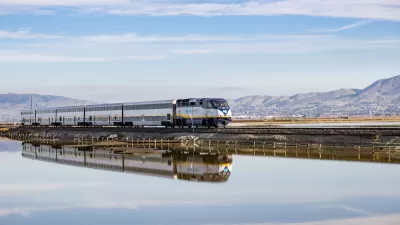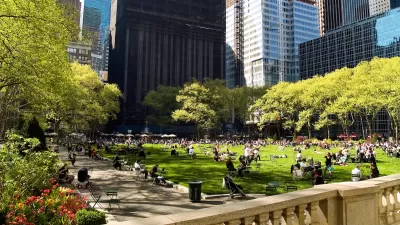Pokémon Go represents the coming of age of a powerful new technology: augmented reality. PIA Young Planner Nick Kamols applies a planner's perspective to what today's anime-based craze might tell us about what's coming tomorrow.

Pokémon Go is captivating the world and in doing so, activating places. If you are interested in how people interact with their environment, you should be interested in Pokémon Go. My relevant credentials for writing about this phenomenon are a Bachelor of Planning, keen interest in Urban Design and at the time of publishing, I have caught 806 Pokémon, visited 866 Pokéstops and walked 57.3km on my way to a level 21 Pokemon Go account. I would have progressed further by now if I had done less people-watching.
We have long speculated about how Augmented Reality(AR) and Virtual Reality (VR) may impact the future of the Built Environment. I believe AR should be embraced for its functionality of complimenting the Built Environment and VR should be treated with caution as it may compete with the Built Environment.
On the back of Pokémon, AR has suddenly entered the mainstream, a leap that VR has yet to make. I suspect we will be addressing the possibilities of these technologies at a much faster pace and on a larger scale than we recently expected.
I’m not advocating for AR to have an impact on the form of places, I do not see an apparent need; rather I think we should be using it to help achieve existing desired outcomes. Now that people are becoming accustomed to AR, it can be an effective tool for activating places and championing population density, walkability and community engagement. AR is widely accessible when on mobile devices and can be used right now for the above purposes but will become increasingly useful over the next few years.
AUGMENTED REALITY UNTIL NOW
AR has long been touted as an impending ‘game changer’ for many industries, most notably retail, but this has yet to eventuate. The most catastrophic of failed attempts of popularising AR was Google Glass, destroyed by the very glassholes who pioneered its use and left a lasting sentiment that the world is not receptive to AR.
It is important to recognise that apps featuring AR were around long before the launch of Pokémon Go. However, none were received well enough to indicate that the technology was on the cusp of taking off.
It is easy to dismiss new applications of the technology on the presumption they will inevitably fail like previous attempts to popularise AR. It is important to remember that in the story of The Boy Who Cried Wolf, the wolf eventually arrives in a big way.
BASICS OF POKEMON GO
In Pokémon Go, a mobile device is used as a tool to interact with a virtual world that is layered over the physical world. The player has to...
FULL STORY: Why Planners and Other Built Environment Professionals Should Be Paying Attention to Pokemon Go

Americans May Be Stuck — But Why?
Americans are moving a lot less than they once did, and that is a problem. While Yoni Applebaum, in his highly-publicized article Stuck, gets the reasons badly wrong, it's still important to ask: why are we moving so much less than before?

Using Old Oil and Gas Wells for Green Energy Storage
Penn State researchers have found that repurposing abandoned oil and gas wells for geothermal-assisted compressed-air energy storage can boost efficiency, reduce environmental risks, and support clean energy and job transitions.

Placekeeping: Setting a New Precedent for City Planners
How a preservation-based approach to redevelopment and urban design can prevent displacement and honor legacy communities.

San Francisco’s Muni Ridership Grew in 2024
The system saw its highest ridership since before the Covid-19 pandemic, but faces a severe budget shortage in the coming year.

Colorado Lawmakers Move to Protect BRT Funding
In the face of potential federal funding cuts, CDOT leaders reasserted their commitment to planned bus rapid transit projects.

Safe Streets Funding in Jeopardy
The Trump administration is specifically targeting bike infrastructure and other road safety projects in its funding cuts.
Urban Design for Planners 1: Software Tools
This six-course series explores essential urban design concepts using open source software and equips planners with the tools they need to participate fully in the urban design process.
Planning for Universal Design
Learn the tools for implementing Universal Design in planning regulations.
Heyer Gruel & Associates PA
City of Moreno Valley
Institute for Housing and Urban Development Studies (IHS)
City of Grandview
Harvard GSD Executive Education
Salt Lake City
NYU Wagner Graduate School of Public Service
City of Cambridge, Maryland





























